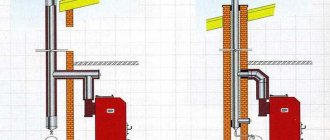Types of gas pipelines
Gas pipelines are divided into:
- Trunk gas pipelines are designed to transport gas over long distances. At certain intervals, gas compressor stations are installed on the pipeline to maintain pressure in the pipeline. At the final point of the main gas pipeline there are gas distribution stations where the pressure is reduced to the level necessary to supply consumers.
- Gas distribution network pipelines are designed to deliver gas from gas distribution stations to the end consumer.
According to pressure in the line:
- Main: first class - at operating pressure over 2.5 to 10.0 MPa inclusive;
- second class - at operating pressure over 1.2 to 2.5 MPa inclusive
- low pressure - up to 0.005 MPa;
By gasket type:
- aboveground;
- underground;
- underwater.
Reserve gas pipelines are constructed for strategic reasons, to provide flexibility in loading gas carriers and to reduce the length of the transportation route.
Manufacturers
The main countries producing liquefied gas are, according to 2009 data:
- Qatar - the volume reaches almost 50 billion m³;
- Malaysia and Indonesia - 29.5 and 25 billion cubic meters, respectively;
- Australia and Algeria – 24 and 21 billion m³.
Japan ranks first among LNG importers. Gas is also purchased by: Spain, USA, France, India.
There are also 2 operating factories in Russia. One of them is the Sakhalin-2 project launched in 2009. The controlling stake is owned by Gazprom. The co-owners are: 27.5% Shell, 12.5 Mitsui, 10% Mitsubishi. At the end of 2015, annual production reached 10.8 million tons, which is 1.2 million tons more than the designed capacity. Unfortunately, due to falling prices on the world market, exports have decreased noticeably in recent years.
Another significant player in Russia is Novatek (Yamal-LNG).
The Americans did not stand aside either: they commissioned 5 LNG export terminals, the total capacity of which is 57.8 billion tons/year. It is clear why there has been a fierce confrontation between these countries for many years.
Gas supply to residential buildings
The use of gas for heating residential buildings and heating water in the warm season has become possible due to the relatively low cost of this fossil.
After undergoing primary processing, it is cleared of mechanical impurities and chemical additives. Thanks to a wide network of gas pipelines, it can be obtained in any locality and delivered to every home.
Scope of application of natural gas in residential buildings:
- Cooking food
- Heating water in the absence of central hot water supply
- Heating in the cold season
Cooking food. Most homes have gas stoves for cooking. They gained popularity not so much from the price of the stoves, but from the cost of fuel, ease of connection, and uninterrupted supply.
The advantages of gas stoves include ease of operation and low cost of maintenance and repair.
Heating water. The use of natural fuel to heat water in homes became popular in the middle of the last century.
A huge advantage of these systems was the presence of an already supplied source of natural gas to apartments and houses.
A serviceable and adjusted column provided stable hot water for the needs of each consumer in the absence of a central hot water supply.
Heating. This type of gas use has found wide application in private homes where central heating is not practical.
Each consumer, having an existing gas supply system in their arsenal, installed a heating boiler for their needs.
Depending on the area of the house, a boiler was purchased and a heat distribution system was installed throughout the house.
The consumer himself chose the temperature in his home depending on weather conditions and, accordingly, gas consumption.
Autonomous gas heating systems
The use of natural gas is relatively inexpensive and safe compared to other sources of thermal energy. Modern gas equipment is capable of automatically ensuring optimal consumption of blue fuel and maintaining comfortable conditions in the building.
The reasons for using autonomous gas supply systems may be the following circumstances:
- absence of a main gas pipeline in the accessible vicinity;
- the high cost of designing and supplying gas from it to the house;
- errors during the construction of a private house, in which connecting the main gas is impossible for safety reasons. The requirements for the design and operation of autonomous systems are much softer.
For autonomous gas supply, the project is developed individually for a specific building. In this case, the developer may be offered a choice of fuel supply source: a gas tank or household gas cylinders.
What does natural gas consist of - gas composition
98% of natural gas consists of methane, and this amount varies slightly depending on where it is produced.
It also includes:
- Butane
- Propane
- Ethane
- Pentane
- Hexane
- The composition contains hydrogen sulfide, carbon dioxide, and water vapor.
To use gas in everyday life, it must have certain parameters, which are regulated by GOST 5542-2014 “Natural flammable gases for industrial and municipal purposes. Technical specifications In order to obtain the established parameters, the supplier purifies the product, removes excess impurities from the composition, and only after that can supply it to the market.
What gas is used in residential buildings
Natural gas entering residential buildings is a flammable mixture of various gaseous substances and impurities. Depending on the mining region, it differs in its quantitative and qualitative composition. But regardless of this, it performs its main function - releasing a large amount of heat during combustion.
An alternative to a centralized gas supply system is the use of gas cylinders or special containers (gas holders). This system is used in private homes. Supplying gas to such houses is often unprofitable and impractical. Gas equipment in summer cottages can be used inconsistently and it is more profitable for their owners to purchase liquefied gas in cylinders or install gas tanks.
Filling a car with household gas is not so crazy: we consider a business plan
How does it work
Motorists have access to two types of gas power, to which (either one or the other - strictly!) any gasoline (as well as diesel, but this is not common) internal combustion engine can be easily converted.
Namely, propane and methane. What do you need to know about these gases? – Propane
used for refueling cars in liquefied form, located in a cylinder under low pressure. Converting a car to propane costs quite a reasonable amount of money, and there are a lot of propane gas stations throughout the country. It is measured and sold in liters, although sometimes converted into kilograms.
– Methane
used for refueling cars in compressed form, located in a cylinder under extremely high pressure. Methane gas equipment for engine conversion is significantly more expensive than propane equipment. There are very few gas stations even in the capitals. Measured and sold in cubic meters.
So, from the pipe in an ordinary city apartment it is methane gas under minimal pressure that comes out, and not propane, as many people think. Household equipment for liquefying propane gas does not exist in nature, and the average person has nowhere to get propane gas for liquefaction. But methane gas is quite accessible to anyone who has a gas stove and pipe at home. Having compressed home gas to the required pressure (about 200 atmospheres), it can be pumped into a car converted to use methane!
Moreover, there is specialized household-grade equipment for such tasks. These are small methane compressor stations, quite compact, designed for installation on a garage wall. The size of a bedside table - to put it in an extremely simplified way. Abroad they are called “gas fuelmakers”. Exactly the same (in a constructive sense) installations are installed at full-fledged city gas filling stations - only fifty times larger and more powerful.
There is not much equipment for home methane compression on the Russian market, but in general there is some choice. The most common is Italian, there are Taiwanese models, and purely Chinese ones have begun to appear. The methane compressor station is connected with a regular low-pressure hose to a household gas pipe - through a tee-splitter, in order to maintain simultaneous gas supply to the kitchen gas stove or heating boiler, if any. Well, to the 220 volt power supply, of course. The electrical power required is very modest, capable of supporting an electric kettle. A gas filling station does not provide industrial loads, since all home equipment of this type is a priori low-power, designed to fill a car gas tank of an average volume for many hours.
In the evening we parked the car in the garage, connected the quick-release hose to the filling fitting and started the station. By morning the bottle in the trunk will be full. The station has many protective sensors that turn it off when the maximum pressure is reached and in the event of any emergency situation.
Minuses
Looks good? Yes, but don’t rush to rejoice... There are many problems with this method of “feeding” the car. But there are five main ones. We will list them in order of decreasing importance, although the order of some points is an individual question... Firstly
, the most serious obstacle to the “autonomous gasification of a car” is the price of gas stations. The most affordable Italian models today cost about 350,000 rubles. Taiwanese ones are about a quarter cheaper. It’s simply scary to get involved with Chinese crafts when it comes to gas compressed to 200 atmospheres... Purchasing used “gas fuelmakers” is an extremely dubious idea, unless you are a practicing gas engineer and are not able to independently troubleshoot high-pressure compressors.
Secondly
, to use this technology, you must certainly be a resident of a private house - a country cottage or at least a gasified holiday village in order to mount a gas station in the garage or under a canopy where you park your car next to your home. In an apartment, it’s impossible to implement something like this—it’s impossible to drag a car into the apartment, of course, and running a high-pressure gas hose out the window is madness. Refilling a removable mobile cylinder at home, a kind of “gas power bank”, which can then be brought into the car and connected to the power system, is also impossible in the case of compressed methane. You can carry cylinders back and forth and connect them only if they contain liquid propane. Methane equipment with its pressures does not allow such tricks.
Third
, fire safety standards in Russia (unlike Europe) do not allow the installation of gas compressor equipment next to residential buildings. That is, again, not a single official gas supplier will undertake to connect such equipment to a private owner and service it. And if, during a regular mandatory inspection of in-house gas equipment (carried out annually by law since 2017, whereas previously the interval was 3 years), a compressor is discovered, you will receive a fine and a requirement to liquidate the “moonshine still.” And if you refuse to dismantle, then the gas supply will be completely shut off until the inspectors’ instructions are fulfilled...
Fourth
, expensive equipment will take a very long time to pay for itself: 350,000 rubles for a compressor station, at least 70,000 rubles for installing methane equipment on a gasoline car... Then, to the cost of each cubic meter of compressed methane obtained from the household gas network, you need to add the cost of electricity spent on it compression, as well as the cost of the uncompressed gas itself according to the meter, if you pay according to the meter, and not at the average tariff (and in private houses, as a rule, there are meters). The time it takes to “get to zero” in terms of costs before the start of real savings at the gas station is quite decent, and in principle it is not achievable on every car...
Fifthly
, it is impossible not to note a number of difficulties with refueling that any owner of a methane car constantly experiences (unlike the owner of a propane car, and even more so a gasoline car). In principle, a home methane station does not provide quick refueling - the process takes several hours. And when you urgently need to leave and the gas tank is empty, you will go on gasoline. If you need to refuel on the road, away from home, then again, most likely, you will have to buy gasoline, because there are no more than a dozen methane gas stations even in Moscow, and their network throughout the country is catastrophically rare...
pros
However, there are also those who are ready to present almost all the disadvantages as advantages!
The cost of the equipment is not that high for a private owner of a large and powerful SUV with an average gasoline consumption of under twenty liters per hundred. Or a commercial car user with high mileage. And the station will pay for itself relatively quickly in the case of a power-hungry and/or heavily driven car.
People with hands in the right place even build such gas stations on their own - most often on the basis of the AK-150 industrial compressors that are widespread in our country. These units have been used everywhere since Soviet times to this day - from tanks to ships, and you can buy a new one from storage on a free classifieds site for about forty thousand, and a used one for half the price. Divers build refueling stands for scuba gear on them, and handy motorists build compressors for compressing household methane. Although this is, of course, a very dangerous extreme, and, frankly speaking, it is difficult to blame the neighbors who, having learned about such dangerous experiments, will immediately report the homemade product to the right place. I want to live!
And if it comes to extreme options, then connecting a methane station to a household gas pipe is technically quite simple and bypasses the rules. The pressure there is slightly higher than atmospheric pressure, and any gas worker from the local gas trust can make an outlet with a valve “to an additional stove” or a heating boiler, who does not have to openly tell him that a completely different device will work instead of the stove. And you can do it without a gas inspector, to be honest... It is also quite possible to hide the system from inspectors - there are no sudden inspections in this area, and by law the gas inspectorate is obliged to warn citizens about the upcoming visit many days in advance.
Money
It would be nice to back up the theory with some specific numbers - and best of all in rubles! Let’s take, for example, a relatively common (adjusted for the narrowness of this market in principle), one of the most compact home methane stations with a methane productivity of 2 m3/hour and a power consumption from the electrical network of 1 kW and a car with a methane cylinder of 100 liters - an SUV with an average gasoline consumption is 15 liters per hundred. Some averaged inputs we need for calculations are:
- methane consumption in cubic meters is approximately 10% less than gasoline consumption in liters;
- with a gasoline consumption of 15 l/100 km, methane consumption will be about 13.5 m3/100 km;
- the cost of 1 liter of AI-95 gasoline is about 46 rubles (Moscow);
- the cost of 1 cubic meter of methane at a city methane filling station is about 17 rubles (Moscow).
- the cost of 1 kilowatt-hour for residents of private houses in rural areas (Moscow region) is 4 rubles;
- the cost of 1 cubic meter of household methane according to the meter for houses with gas stoves is 6.56 rubles; for houses with gas stoves and AGV - 5.79 rubles (Moscow region).
A 100-liter cylinder holds 25 cubic meters of compressed methane (formally, in reality a little less). If you arrive from work, say, at eight in the evening, and are already up at six in the morning, then you have 10 hours at your disposal. With a compressor capacity for methane of 2 m3/hour, we can put 20 “cubes” into a car cylinder. So, let's turn on the “shaitan machine”!
10 hours of operation of a methane compressor station is 10 kilowatt-hours spent on gas compression, costing 40 rubles.
20 cubic meters of methane pumped by the station from a household gas pipe is 116 rubles.
116+40=156 rubles. That is, for 156 rubles we received 20 cubic meters of compressed methane. For the same volume of compressed gas, if we bought it at a city methane gas station, we would pay 340 rubles. That is, the benefit between city and home gas stations is 184 rubles for every 20 cubic meters, or 8 rubles versus 17 per cubic meter. More than twice the price. The difference with gasoline looks even tastier. In city traffic, the ratio of methane and gasoline consumption is 1:1, and on the highway - 0.8:1, but even if we take the consumption one to one, it is 8 rubles versus 46 rubles. The difference is almost 6 times! Now let’s calculate how quickly the equipment will pay for itself, for simplicity, equating a liter of liquid fuel to a cubic meter of gaseous fuel. Let’s assume that the cost of purchasing a methane filling station, installing it and equipping the car with methane power comes to 400,000 rubles (and this is a very optimistic figure, we note). And if we drive our car, which consumes 15 liters of gasoline per 100 km, 20,000 kilometers a year, we will spend 138,000 rubles on gasoline. And on “home gas” under the same conditions – 24,000 rubles. Savings per year – 114 thousand rubles. And with this savings we can recoup our invested 400,000 rubles in 3.5 years. If the car's mileage per year is 30,000 kilometers, then the gas hardware will pay for itself in 2.3 years. And with a mileage of 50,000 per year - in less than 1.5 years! However, if you have an economical small car, which even in traffic jam mode does not consume more than 8 liters per hundred, and you drive 15,000 kilometers per year, typical for many residents of a metropolis, then the payback of the “moonshine still” will take ten years. In this situation, investments in “home gas” are clearly unprofitable. Over ten years of almost nightly operation, the gas station will wear out to the point of complete inoperability, and so will the gas equipment on the car. In general, either the donkey will die, or the Sultan, or Khoja himself...
Survey
Have you thought about switching to methane and refueling “from the stove”?
Your voice
Total votes:
How does natural gas differ from liquefied gas?
Depending on the type of gas used in everyday life, it can be delivered to the consumer in two ways:
- Through a pipeline system directly connected to a gas stove or water heater. With this option, it comes immediately in a gaseous state and is suitable for use.
- Through the ground transport system. Some household and industrial gases are pre-placed in cylinders or special containers (gas holders). There they are in a liquefied state. Depending on the type of gas, the process of turning into a liquid may differ. To convert household gas back into a gaseous state, simply open the cylinder.
Natural gas is suitable for use almost immediately after its extraction. The absence of the need for additional transportation costs makes this type of fuel the cheapest and most convenient for use in everyday life. Depending on what gas is used: propane or butane, the methods of bringing it to a liquid state and placing it in a cylinder differ. There are also differences in the methods of transporting cylinders and safety precautions during their operation.
Depending on what kind of gas is used in residential buildings, it is necessary to ensure its delivery to the consumer, to correctly select, connect, configure and maintain equipment, as well as to take measures for the safe use of this gas.
Advantages
- Convenience of energy storage (due to the high density of liquefied gas), delivery and consumption. The cryogenic non-toxic liquid is stored at minus 162 degrees Celsius. For large volumes, above-ground containers are used, where it is under atmospheric pressure;
- Intercontinental transportation, for which gas tankers, tank trucks or railway tanks are used;
- Opens up the possibility of gasification of objects located at considerable distances from gas mains. There is no need to build expensive pipelines.
Gas pressure in the gas pipeline of a residential building
In order to ensure a stable and uninterrupted supply of natural gas to apartments, a pressure of up to 12 MPa is created in the pipelines of transport highways. Then the gas supplied to gas distribution stations is distributed to residential buildings. In gas pipelines of utility networks of apartment buildings, gas movement is ensured by pressure reduced by 10 times. To ensure its suitability for domestic use, additional processing and purification of natural gas is carried out at gas distribution stations.
Dangerous properties of natural gas
Each of us, from school age, begins to be told about the need to carefully handle fire and household gas. However, not everyone knows what the consequences of leakage of this substance are.
For example, there is a widespread misconception that a person can be poisoned by household gas. This is impossible, because The natural gas supplied to homes is itself non-toxic. Death from leakage occurs due to asphyxiation. When gas molecules used in everyday life enter the lungs, they block access to oxygen. And the person dies, no longer able to breathe.
Natural gas is explosive. Once you smell it (more precisely, the smell of odorant), you need to stop using all electrical appliances, including those operating offline, and also not use open fire. Be sure to open all doors and windows, then call the gas service. These are measures to prevent an explosion from occurring when a dangerous gas concentration in a room is reached (5 - 15% of the total air mass). It is impossible to determine the level of gas pollution on your own, so it is better to play it safe and follow the recommendations. And also remember that the highest concentration of the substance in the room will be at the top, because Natural gas is almost 2 times lighter than air.
You can prevent dangerous consequences from gas used in everyday life by installing a special gas analyzer that will warn of a leak. And, of course, have a working ventilation system that will not allow high gas concentrations in the room.
Risk of explosion and fire from gas
In case of poor ventilation, an explosive mixture may accumulate in the room, and with a small spark or the use of open fire, an explosion may occur, which will cause a fire.
Regular inspection and cleaning of ventilation ducts can eliminate the risk of fire from gas leaks.
Modern methods of monitoring gas leaks in everyday life are individual gas analyzers, which can be installed near gas appliances on the ceiling. When there is a gas leak, they give a signal to which the owner must respond.
Gas cylinders used in everyday life
In addition to natural gas supplied through the central gas pipeline, liquefied gas is often used. Basically, it is propane-butane, which is obtained from oil refining. Other hydrocarbon mixtures are less common.
Liquefied natural gas is practically not used in everyday life. It is also rarely used in industrial plants due to the difficulty of keeping the substance in a liquid state. This requires greater pressure and thickness of the tank, which is significantly more expensive.
Liquefied propane-butane gas used in residential buildings has a high calorific value, which is a definite advantage. For example, the room will be heated longer when using a cylinder. At the same time, propane-butane gas is much more explosive than natural gas.
When deciding to switch to using liquefied gas cylinders, you should take into account that when connecting to the stove, the nozzles will need to be reconfigured or changed. The diameter of the hole in the nozzle regulates the amount and speed of the supplied gas. These values differ depending on the particular substance used due to differences in composition, and, consequently, properties and characteristics.
An unsuitable nozzle will lead to unnecessary gas leakage and soot marks on the dishes or a low-temperature flame. Both of these options mean increased utility costs due to increased fuel consumption.
Household gas cylinders and auxiliary equipment
A large amount of liquefied propane-butane gas is sold in household cylinders for household, tourist and other purposes. The equipment used for these purposes differs significantly from industrial equipment, not only in size, but also in design. Household cylinders and auxiliary equipment used for home consumption, tourism and other purposes must be durable and safe. When carrying out operations to connect cylinders to gas-consuming equipment and disconnect them, leaks of liquefied gas must be minimal, and gas shutoff must be carried out by automatic valves. After an accidental fall, equipment should be checked for integrity.
The capacity of household liquefied gas cylinders ranges from 100 ml (single-use cylinders) to 50 liters (the most widely used reusable household cylinder). Liquefied gas cylinders are manufactured in strict accordance with steel specifications. This ensures that all required performance characteristics are achieved. The following information must be stamped and clearly visible on the top spherical part of each cylinder:
- manufacturer's trademark;
- cylinder number;
- actual weight of the empty cylinder (kg);
- Date (month, year) of manufacture and year of next inspection;
- operating pressure;
- test hydraulic pressure;
- cylinder capacity (l);
- OTK stamp.
It is prohibited to operate cylinders on which not all data is stamped.
LNG transportation
What to do with hard-to-reach areas located far from the main gas pipelines? To such areas, gas is transported in a liquefied state (liquefied natural gas, LNG) in special cryogenic tanks by sea and by land.
By sea, liquefied gas is transported on gas carriers (LNG tankers), ships equipped with isothermal tanks.
LNG is also transported by land, both rail and road. For this purpose, special tanks with double walls are used that can maintain the required temperature for a certain time.
Ecological fuel
Liquefied gas has a fairly high octane number and is distinguished by high energy indicators, which allows it to be used for refueling cars. Without harming the environment, the use of this fuel reduces oil consumption and engine wear. Its price is lower than the cost of gasoline. In addition, liquefied gases are safe, and refueling is carried out at specialized gas stations. This explains why it is considered a more economical fuel than gasoline.
Ecology
Natural gas is the cleanest among hydrocarbon fossil fuels. Ideally, its combustion produces only water and carbon dioxide, while the combustion of petroleum products is accompanied by the formation of soot and ash.
Of course, emitting large amounts of carbon dioxide into the atmosphere in itself is not safe. According to some scientists, they can lead to the greenhouse effect, and as a result, to significant climate warming. However, it is worth noting that natural gas also wins in this regard - CO2 emissions during its combustion are significantly lower than those of petroleum fuel.
Reasons for moving gas pipes in the kitchen
All work on moving and replacing metal pipes, especially those requiring welding, is carried out by representatives of Gorgaz or another authorized organization. Having received an application from residents, they are always interested in the reasons for the planned transformations.
Most often, it is necessary to change the piping in the kitchen without changing the layout or moving equipment to other rooms. The reasons may be different:
- replacing old equipment - purchasing a gas water heater, stove or boiler - which requires a little more space;
- major renovation in the kitchen;
- moving the gas stove from the window 0.5-2 m towards the sink;
- changing the installation location of the gas meter;
- moving a horizontal pipe from a great height under a table top, etc.
Often, the relocation of pipes is required in new buildings, where the original location of significant kitchen objects defies logic and explanation: suppose, if in a 15-meter kitchen the gas stove is located near the window, the sink is in the opposite corner, and the hood is on the other side, above the entrance to the kitchen. We have to correct the design mistakes and move the stove closer to the sink so that food can be cooked in comfortable conditions.
It is strictly forbidden to carry out work to move the gas riser. The only change allowed is to disguise the pipes with easily dismantled structures, for example, wall-mounted kitchen cabinets
The most common reason is the purchase of a new kitchen set with built-in equipment (oven and hob). In this case, the pipes need to be either shortened or lengthened, depending on the planned installation location of the devices.
If you want to find out how best to move a gas pipe in an apartment with redevelopment, we recommend contacting a design organization to draw up a transfer plan. The fact is that in typical city apartments it is prohibited to reinstall risers, pipes, as well as any gas equipment in living rooms, and even to combine a kitchen and a room, permission is also required.
Obtaining approval for gas pipeline replacement
Whether a transfer is possible or not can only be decided by authorized bodies, that is, the gas service of your city (district). Only a qualified specialist has the right to carry out any dismantling and installation work. Of course, pipes cannot be moved without approval.
Even such a simple step as cutting a pipe by 10 cm must be approved, since all work related to the gas pipeline falls into the risk category
The permit is issued in the following sequence:
- Find out the contact details of the gas service at the place of registration, contact specialists, explain the situation, and consult.
- You draw up an application (using a standard form) that will “launch” the approval process.
- Based on your application, a gas service representative will arrive at your home. The time will be confirmed in advance.
- The specialist performs an inspection, listens to wishes, and answers questions. Often at this stage it is necessary to change plans, since the desired transfer does not meet safety requirements (a preliminary study of the gas pipeline installation standards will eliminate this unpleasant moment).
- Approval of the final transfer scheme, drawing up an estimate. All documents are prepared by the organization providing the services. No work will be carried out without the consent of the property owner.
- If the transfer conditions are met, pay for the service using a receipt and agree on the start time of the work.
The approval procedure usually takes several days; it can drag on for a long period for only one reason: if the property owners and representatives of the gas service have not found a compromise solution. Any factors that violate the installation standards for gas stoves (boilers, meters, water heaters) may cause refusal to move pipes.
How toxic and explosive is natural gas?
The gas used in a residential building is not toxic, so cases of poisoning with it can be excluded. If an emergency occurs, a person may die from suffocation rather than from gas poisoning.
When blue fuel leaks, carbon dioxide molecules enter the human lungs. They displace oxygen molecules, which causes suffocation and can lead to death.
Methane is a flammable and explosive fuel. If its ratio with air is 15 to 85 percent, then there is a danger of explosion. Without special instruments, it is impossible to determine the concentration. If you smell gas, you need to take safety measures:
- open windows and doors in the house;
- turn off electrical appliances and lamps (you cannot use a mobile phone);
- call the appropriate service; gas specialists must be present as part of the emergency team;
- do not use matches or other objects to create fire.
Why does gas smell in apartments?
Specializes in family issues, civil, criminal and housing law. Initially, natural fuel is odorless, so the consumer will not be able to detect its leakage, which may result in an explosion. In order to avoid such situations, special liquids are sprayed into the gas used in apartments. They give the fuel an unpleasant, pungent odor, upon sensing which consumers will be able to determine the leak and call the gas service.
Complications after poisoning
After severe intoxication of the body, a person may develop chronic diseases:
- hearts,
- respiratory tract,
- nervous system.
Often such patients complain of memory impairment, prolonged weakness, and constant discomfort in the nasopharynx. Therefore, they must be observed by specialists for three years. It is important not to miss the development of more serious problems. If such symptoms do not bother you, it is enough to undergo an examination once every six months.
How to protect yourself when using gas appliances
Fuel and equipment must be used according to certain rules:
- Every year, gas service employees must check gas appliances and the in-house gas supply system.
- Periodically monitor the draft level in the kitchen or in another room where gas equipment is installed. If an insufficient level of ventilation is detected, the shaft will need to be cleaned.
- In winter, do not close the ventilation.
- After finishing using the gas, turn off the valves and taps of the pipelines located near the equipment.
- While equipment is operating on methane, it must not be left uncontrolled.
- If you smell gas, you should follow the recommendations presented above.
- A gas analyzer can be mounted on the ceiling above gas appliances. If a fuel leak occurs, residents will be notified by an audible signal.
The above recommendations will help users avoid accidents.
Not allowed:
- move gas equipment on your own initiative and install it yourself;
- allow preschool children to use gas stoves and other equipment without parental control.
Actions when a leak is detected
The responsibilities of the gas service include inspecting and repairing gas pipes and preventing accidents. To this end, service employees explain what to do if the apartment smells of gas, what actions should not be taken so as not to cause a fire or explosion.
- If you smell gas, the color of the flame changes, or you hear a whistle, you must immediately turn off all operating gas appliances and turn off the methane supply valve.
- If the whistle appears near the tap itself and the strongest smell is felt there, cover this part of the pipe with a wet rag.
- If the gas coming out of the pipe catches fire, it cannot be extinguished. As long as it burns, there is no danger of explosion. It is necessary to turn off the tap and open the windows.
- Immediately open windows and doors to create a strong draft. The faster the methane disappears from the room, the lower the risk of fire. Open windows in the kitchen and all other rooms.
- Do not use electrical appliances or turn on lights if a leak is detected. The power supply must be turned off at the panel. This is the best way to prevent accidental sparks.
- It is strictly forbidden to use matches or a lighter in a gas-filled room or area.
- After turning off the devices, call the emergency gas service - 104 or 04. It is recommended to call the fire department. You need to call on the floor below, where you can’t smell the gas. It's best to do this outside.
- Neighbors must be warned about the leak. You can't ring the doorbell - you have to knock.
It is not uncommon for the smell of ethyl mercaptan to be confused with the smell of alcohol, ammonia and others. According to statistics in Moscow last year, only 5% of calls turned out to be justified.
What does this or that color of fire in the burner indicate?
The shade of the flame in a gas burner can tell you about the combustion characteristics of natural fuel. If the fire has a rich blue color of a homogeneous structure, it means that the gas is completely burned. At the same time, the maximum possible amount of heat is released into the space.
What happens when the flame in the burner turns reddish or bright yellow? If the combustion gas is any color other than blue, this may indicate that the burner is receiving limited air or the gas is of poor quality. In this case, fossil fuels do not provide heating efficiently enough. To eliminate this drawback, it is enough to call a qualified specialist by contacting the gas industry.
As you can see, the color of a gas when burning can provide useful information. A yellowish or reddish tint of the fuel when ignited indicates that low-density gas is being supplied to the house. And since heating boilers are designed to consume fuel of a certain quality, when the gas density decreases, the equipment will need more substance to create a comfortable temperature.
In fact, yellow or red flames on the igniter indicate that the devices are using more fuel. Management companies may be to blame for such an omission. Some of them deliberately reduce the carbon dioxide and hydrocarbon content in the gas. Therefore, if the color of the flame on a gas burner changes, users have the right to contact the supplier for clarification.
Why does gas explode so violently in residential high-rise buildings?
To turn on the column in water heating mode, the following conditions must be met: the presence of water in the water supply system and sufficient pressure, the presence of draft in the chimney to prevent carbon monoxide poisoning during its operation, sufficient pressure in the gas supply system. The chimney is used to remove gas combustion products outside the room. The burned gas releases heat, which is transferred to the cold water flowing through it. The output is water heated to the required temperature for domestic needs. The ignition unit allows you to ignite the gas when a command is given from the automation unit. Basic rules of gas safety in everyday life In order for the use of gas appliances in everyday life to bring only benefits, it is necessary to comply with the requirements of the rules for the safe operation of gas appliances: Inspect the equipment annually by qualified specialists Constantly check the draft in the room where gas appliances are located Do not block the ventilation grilles in winter Do not leave running appliances unattended. After finishing use, close the taps on the appliances and valves in front of them. If you smell gas in the room, do not turn on the lights, do not use open fire. Open the doors, windows and ventilate the room, then call the emergency gas service to inspect and eliminate the leak.
Recommendations for safe use of gas
In practice, most explosions and fires are caused by human factor, neglect of safety precautions when using gas, and negligence in handling gas equipment.
To protect yourself and your loved ones, you need to follow a number of norms and generally established rules. This will help prevent explosive situations and all adverse consequences associated with gas leaks.
Rules for operating gas equipment
Any gas equipment should be purchased only from specialized companies that can present certificates for the sale of this type of product. Please note that the kit contains instructions for the safe use of the device.
Installation and repair work must be carried out by specialists from relevant organizations. Unauthorized gasification of a house or apartment, replacement, reinstallation and changes to the design of gas appliances are strictly prohibited
It is important to adhere to the following rules for operating gas equipment:
- carefully read the instructions and follow the recommendations indicated therein;
- do not use the equipment for other purposes (heat the apartment using a gas stove);
- monitor the performance of devices and ventilation, annually invite specialists to check the draft;
- ensure normal air flow in the room, do not isolate ventilation openings, do not block gas pipes;
- do not leave functioning devices unattended, especially in rooms with young children, and also if the devices are not designed for continuous operation and are not equipped with appropriate automation;
- do not tie clotheslines to gas pipelines;
- turn off gas valves and taps on the pipeline before leaving home; if you are away for a long time, it is better to turn off the electricity;
- Do not blow out or pour water or other liquids onto the flame on the burner.
It is very important to regularly check the condition and tightness of hoses, fittings, and threaded connections. The optimal length of the flexible hose is no more than 2 meters, the maximum service life is up to 4 years.
The hose should be tightly placed on the gas valve, but it is not recommended to overtighten the clamp clamp.
Most often, gas leaks occur due to ruptures in the hoses connecting the stove to the gas pipeline or failure of sealing in the area of threaded seams. Another common reason is the inattention of users who forget to close the valves responsible for the gas supply.
If you feel the characteristic smell of gas in the apartment, you must immediately turn off the burner taps and valves on the pipeline. You should also open doors and windows and thoroughly ventilate the gas-filled room, making sure that everyone present quickly leaves it.
People affected by gas should be immediately taken out into fresh air and given first aid:
- lay on your back so that your legs are higher than your body;
- remove tight clothing;
- cover, rub the chest, bring ammonia;
- when vomiting, turn on side;
- If possible, drink plenty of water.
You cannot do anything that could create a spark or flame: smoke, light a fire, turn on/off electrical appliances, lighting, press the bell button, use mobile devices.
Causes of the specific smell of gas
Methane itself, in its pure form, does not have a characteristic odor or color. What is added to household gas to give it its characteristic smell? It is possible to detect a leak using the sense of smell due to the fact that a small amount of substances with a strong unpleasant odor are mixed into the gas.
These substances are called odorants . They give the fuel mixture a specific smell of rotten hay, rotten eggs or rotten cabbage, which warns of danger and a possible gas leak in the room.
Odorants do not make the gas more toxic. In small concentrations, these substances are not hazardous to health, evaporate easily and are of a warning nature. If concentration limits are exceeded, substances may cause headache, nausea
Sulfur-containing organic compounds are used as odorants, most often ethyl mercaptan or ethanethiol . They are sprayed into the structure of the fuel mixture using special installations during processing.
Leak detection methods
Several proven methods are used to detect gas leaks indoors. The simplest and most common option is to inspect the surface by applying soapy water along the gas pipes. , bubbles form in problem areas .
The most reliable way to avoid trouble is to install a carbon monoxide detector.
This modern, ultra-sensitive device - a gas leak sensor - will instantly notify you of the slightest problem through a sound or light alarm.
You can also detect a leak by hearing or smelling it. If there is a strong leak, the fuel mixture escapes from the pipes with a whistle. It is easy to smell the specific smell of odorants added to the fuel structure during processing.











